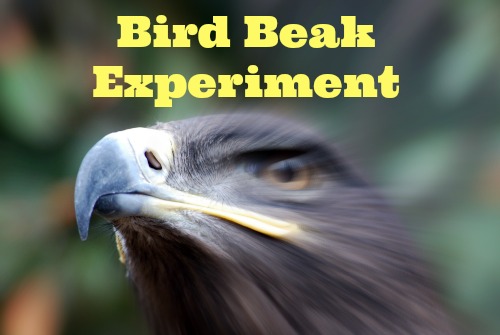
Have you ever wondered why different species of birds have different types of beaks? Our kids did a fun bird beak experiment to find out more about birds’ beaks and what the differences mean for the birds.
The kids and I were at our local nature center watching the birds eat from the various bird feeders outside the viewing window. We noticed certain types of birds seemed to like certain feeders. Some birds never landed on feeders and seemed to prefer to eat seeds that had dropped on the ground below the feeders. This sparked an interesting conversation. The kids wanted to know why the birds had specific preferences of feeders and food.
Specialized Tools
The feeding habits of each bird species rely on their type of beak. Birds beaks are very specialized tools that determine what birds are able to eat. Some beaks are great for cracking the hard shells of seeds and nuts, while others are better for probing for and grabbing insects.
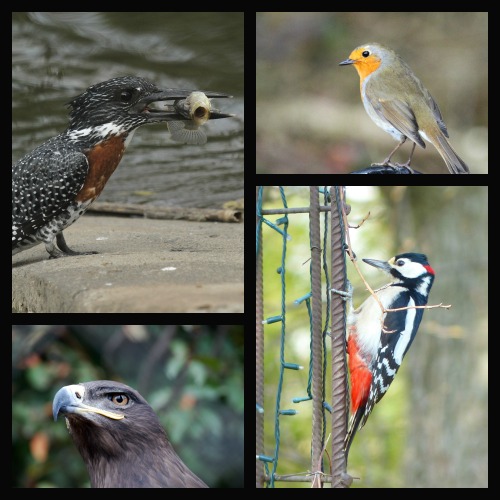
Woodpeckers have strong beaks that allow them to peck holes in dead trees to then grab the little insects living inside, while the kingfisher’s long beak allows them to grab fish out of the water while on the fly. The sharp, curved beak of the eagle is perfect for tearing the flesh of fish and the long, slender beak of the hummingbird gets deep into flowers to drink the sweet nectar.
Exploring Beaks
To give the kids a good idea of how the different types of bird beaks work and why this determines what birds eat, we did a simple experiment.
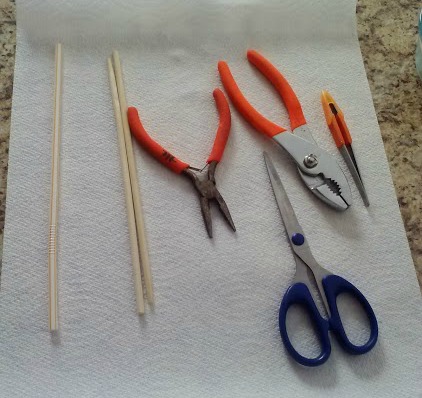
First, we collected our “beaks” – scissors, tweezers, chopsticks, straw, and pliers.
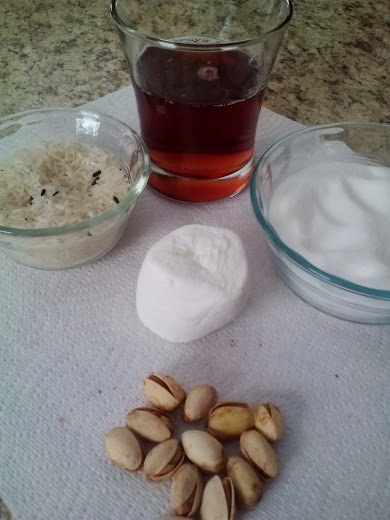
Next, we gathered our “bird food” – juice, marshmallows, gummies in sugar, rice, and pistachios.
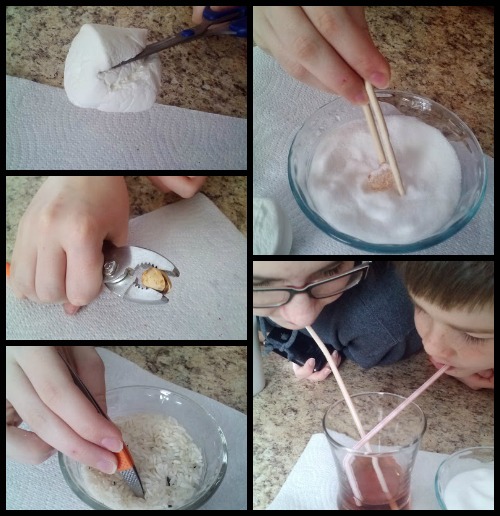
The kids tested the beaks’ abilities to get the different foods for a while. They made these discoveries.
- The straw is a lot like a hummingbird beak and was perfect for drinking nectar…or juice.
- The scissors were like the beak of an eagle and could tear into the marshmallows like eagles do with meat.
- The chopsticks could dig gummies out the sugar just like robins digging worms out of the ground.
- The tweezers pried colored grains of rice out of a bowl of rice like woodpeckers pry insects out of dead trees.
- The pliers cracked the pistachios open like the powerful beak of a cardinal cracking open seeds.
To Learn More
Here are some ideas to expand your knowledge of bird beaks.
- Try this experiment on your own. Try different beaks (tools) on the bird foods. How did they work?
- Research birds and make lists of birds with similar beaks. What other similarities to the birds on each list have?
- Download this bird beaks and different kinds of feeding image
- Birds and Beaks printable- FREE to my subscribers. Fill out the form below to download.
Learning about birds’ beaks gave the kids a greater understanding and respect for God’s creation and the thought and care that went into each animal. Get your kids into nature and start some learning projects of your own!
This post was written by the intelligent, Marci Goodwin. Be sure to visit her at The Homeschool Scientist for more FUN science ideas!
- Twitter – @HSScientist
- Facebook – The Homeschool Scientist
- Follow me on Google+
- Follow The Homeschool Scientist on Pinterest
Please take note of printing tips:
Please copy and paste the link into a new browser tab to print.
Please download and save it on your hard drive immediately to avoid the link becoming expired
Thank you for visiting Blessed Beyond a Doubt and pinning it for others to enjoy!!!











What an effective and enjoyable way to learn about bird beaks!
[…] Bird Beak Experiment – Bird beaks are specialized tools that determine what birds are able to eat. With this fun experiment kids will find out about birds’ beaks and what the differences mean for the birds. […]
Thank you so much for the idea & the links! We’re using this with Apologia’s Exploring Creation with Zoology 1: Flying Creatures of the Fifth Day.
[…] Bird Beak Experiment | Blessed Beyond a Doubt After you notice that not all beaks look the same, it might be a good time to explore the different uses for beaks! Beaks are so much more than lips – they are tools that birds can use in many different ways. […]
Hi Marci,
Just wondering if I could have a copy of the “birds and beaks printable” the link says that it cannot be found 🙂
So sorry. I’ll see if we can get the link updated.
Can we get the bird and beak printable?